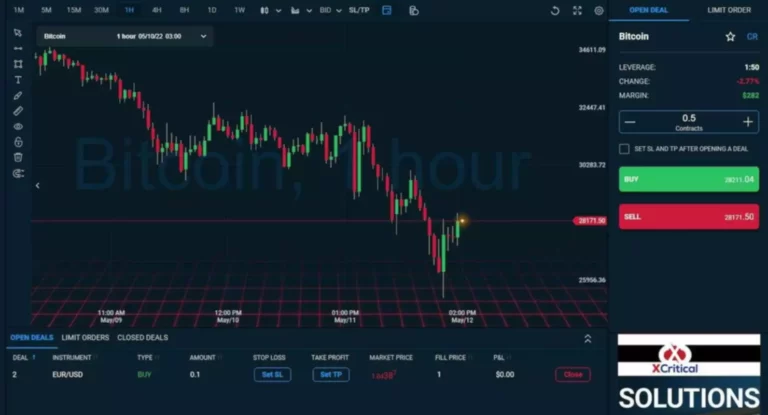Whereas they contribute to a safer trading environment, they could sacrifice some speed and efficiency compared to their centralized counterparts. The absence of a central server minimizes the danger of breaches, making them a safer different. Sure, some blockchain-based trading systems use decentralized matching engines, especially in decentralized exchanges (DEXs). However they often have more issues with scalability and latency in comparison with centralized systems, making them much less ideal for high-frequency buying and selling.
As financial technology evolves, so too do the regulatory requirements governing them. Ensuring that a matching engine complies with all relevant laws and regulations could be difficult, notably in areas with stringent monetary oversight. Implementing a sophisticated matching engine may be technically complex and costly. The initial setup requires vital funding in time and cash, and there could additionally be ongoing prices associated to upkeep and upgrades.

An order matching engine (OME) is a software system that matches buy and promote orders from market members to facilitate the execution of trades. Their objective is to create a stage enjoying subject on which market members can access price info to purchase and sell securities. The willingness of merchants to purchase or promote an asset at a predefined volume and price is logged by these venues, forming public “order books” for each tradable symbol. By seamlessly connecting consumers and sellers, matching engines can contribute to market liquidity. This liquidity, facilitated by efficient order matching, can result in a more responsive market environment.
Order Matching
This system encourages extra buying and selling and liquidity, which is significant for the general well being of the marketplace. The model is very common in crypto markets, where understanding trading strategies can help merchants benefit from liquidity incentives. This extensively adopted algorithm prioritizes orders not only by the most effective value but also by the order timing. Generally used structures include red-black bushes and hash tables, which permit for quick insertion, deletion, and retrieval of orders. These buildings help the excessive throughput and low latency required for contemporary trading systems. Right Here the mistake is an assumption of negligible influence of simulated on historic knowledge technique on market knowledge and on different market members.
The market knowledge wouldn’t be the same because buying and selling actions that don’t affect the market simply don’t exist. For instance, when a pointy move occurs at considered one of two highly correlative markets when this data reaches traders, it virtually actually will affect their choices in regards to the other market and thus affect its price. In such eventualities, velocity is the essential (and sometimes the only) component of successful arbitrage. Commissions that exchanges charge for matching and execution between orders are the principle source of their earnings.
This innovation not only simplifies operations but in addition reduces operational costs. Moreover, our crypto matching engine assist price discovery, which is especially challenging in decentralized exchanges. By aggregating liquidity from numerous sources, we assist stabilize costs and offer seamless execution for merchants. Historic https://www.xcritical.in/ knowledge performs an important function in refining matching algorithms and improving order matching techniques.

Traders aim to get the advantage of short-term buying and selling opportunities corresponding to arbitrage between correlated and dependent on one another markets, fundamental factors, the behavior of different traders, and so forth. There is numerous trading styles and motivations, well coated and structured by a zero-sum article from 1993 5 (see tables on the end). Low latency permits getting the benefit of short-term trading alternatives sooner than other merchants who observed the same opportunity. If executed earlier, the other merchants will move the worth in the desired direction by their actions however might have worse execution prices, and vice versa 6. At its core, an identical engine is a sophisticated piece of software designed to pair consumers and sellers in monetary markets. DXmatch is Devexperts’ proprietary order matching engine designed for ultra-low latency and high throughput applications.
The Importance Of Matching Engines For High-frequency Buying And Selling

Such methods How Matching Engines Work in Trading had been considerably more time-consuming and vulnerable to human error when in comparison with the sophisticated matching engine methods we use right now. The trade infrastructure encompasses the hardware and software program components that assist the matching engine. This consists of servers, community connections, and co-located amenities that ensure excessive availability and ultra-low latency. The infrastructure must be strong sufficient to handle a quantity of connections and a large quantity of trades simultaneously. By default, Bookmap displays timestamps of receiving the info and orders updates on the client-side, using its pc clock.
- We’ve already mentioned the order book, which is among the primary elements of an identical engine.
- The absence of a central server minimizes the danger of breaches, making them a safer various.
- Orders are essentially the most fundamental elements in trading, but on the identical time, as shown above, the one components that have an effect on the market.
- Understandably, they needn’t analyze terabytes of uncooked market knowledge throughout that interval.
- Centralized matching engines offer real-time matching with exceptional pace and efficiency.
Even if they watch it to develop a buying and selling technique, the purpose is to have the flexibility to make a greater prediction in the future. But since market data is generated by the exercise of merchants, observing it is in a way, an attempt to understand what different traders take into consideration the longer term. In this article collection, we explain what crypto matching engines are and unravel the mechanics behind their operation. Have you ever questioned concerning the magic that happens behind the screens whenever you commerce stocks or cryptocurrencies? How does an online trading platform or trade perfectly pair the countless purchase and promote orders from traders all around the world?
Matching engines are pivotal in fashionable buying and selling infrastructure, driving efficiency and transparency throughout forex crm monetary markets. Their integration into buying and selling platforms brings many benefits that may transform market operations. Centralized matching engines supply real-time matching with exceptional velocity and efficiency. Operating on a single central server, they swiftly process orders, making them perfect for high-traffic exchanges where quick matching is essential. It organizes purchase and promote orders according to their value level, displaying market depth and permitting for environment friendly value discovery.
As the core of buying and selling platforms, matching engines are liable for processing buy and sell orders, ensuring trades are executed swiftly, accurately, and efficiently. Whether Or Not in foreign trade, equities, commodities, or cryptocurrency markets, the proper matching engine can considerably influence market participants, liquidity, and general buying and selling performance. This article dives into the mechanics, benefits, and future of matching engines whereas additionally exploring their role in evolving markets like crypto. In the high-speed world of monetary buying and selling, the matching engine is the core know-how that powers traditional and trendy exchanges.
This examine case alone demonstrates the importance of latency and the significance of understanding the foundations of the game previous to taking part in it. An OCO (One Cancels the Other) order permits you to place two orders at the similar time. Lossless packet captures are like “ground truth”, a better normal than even normal tick data, normalized “L3” information, or uncooked binary information purchased immediately from the trade.
